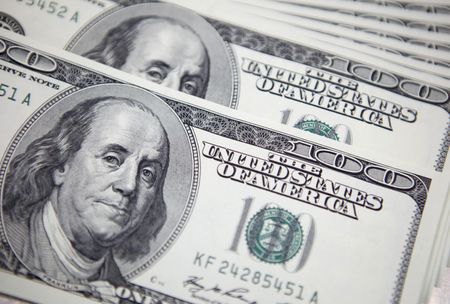A look at the day ahead in European and global markets from Wayne Cole.
It’s been a blessedly quiet start to the week, with President Trump more engrossed on his disappointment with Russia, than his trade war. In this case, silence is golden, as the White House’s communication on trade has been a lot more noise than signal.
Thus, Agriculture Secretary Rollins tells TV they are speaking with China every day, likely news to Beijing. Then Treasury Secretary Scott Bessent says he has not discussed tariffs with Chinese officials and doesn’t know if Trump talked to Xi, as he claimed.
Apparently the White House plan is to have trade talks with six different nations every week until Trump’s July 9 deadline on tariffs. Perhaps somewhat optimistic, given it takes on average 18 months just to set the terms of a deal, and longer to actually pass one.
For now, markets are assuming they’ve seen peak tariff and Trump will be forced to lower levies on China, particularly after major U.S. retailers last week warned him their shelves would otherwise soon empty.
Analysts at Barclays reckon a likely outcome will be 60% tariffs on China, 10% on everyone else and sectoral levies remaining at 25%, with exceptions. Even that, they note, would be worse than their worst-case scenario heading into 2025.
Maybe one reason Asian shares are just marginally firmer so far today, while Wall St futures are down around 0.5% even as analysts are generally upbeat about looming earnings.
About 180 S&P 500 companies representing more than 40% of the index’s market value report this week, including mega-caps Apple, Microsoft, Amazon and Meta Platforms. Clearly, there will be intense interest in Apple’s outlook for iPhone sales and the impact of tariffs on its sprawling supply chains.
As for data, euro zone and U.S. inflation reports this week are expected to be dovish for policy, as is the Q1 U.S. GDP report where a surge in imports, notably of gold, will bias down the headline number. Even excluding gold, the Atlanta Fed GDPNow measure tips GDP to drop 0.4% annualised.
The payrolls numbers on Friday are more timely and should help refine wagers for a June rate cut from the Fed, currently put at around 63%.
Key developments that could influence markets on Monday:
– Appearances by ECB Vice-President Luis de Guindos and Bank of Finland Governor Olli Rehn
– Dallas Fed manufacturing survey
(Editing by Jacqueline Wong)









